Forget the gym — you only need these 5 moves and a kettlebell to build upper-body muscle
One weight, five moves to build muscle

When you're tight on time, it's hard to find ways to hit your fitness goals. But you don't need a gym's worth of equipment or loads of spare time to build muscle in your upper body — just a bit of space and a kettlebell.
This short routine is designed to raise your heart rate, work several muscles simultaneously for improved efficiency, and strengthen your chest, shoulders, and arms.
If you're at the gym, choose a weight that'll challenge your muscles but won't affect your form. But for home workouts, it's worth investing in one of the best kettlebells, as they're durable, versatile, and easy to store.
Then you'll be ready to take on this upper-body workout designed by personal trainer Ollie Thompson. If you're new to strength training, Thompson has also included step-by-step instructions to help you perfect your form.

Ollie Thompson is a London-based personal trainer with over 10,000 hours of coaching under his belt. His sessions equip clients with fitness and well-being strategies to regain control of their health, thrive with high energy, prevent burnout, and develop a strong, robust, and pain-free body that’s built to last.
How to do this five-move upper-body kettlebell workout
According to Thompson, "This workout consists of five exercises targeting all major muscle groups in the upper body: chest, back, shoulders, arms, and core. All exercises can be performed with just a single kettlebell."
Although you can do these moves in any order you like, or add them to your existing routine, Thompson suggests building them into a short circuit instead, doing all five exercises before taking a 90-second rest.
The aim is to repeat the circuit up to five times for an effective, efficient, muscle-building, fat-burning workout you can do in limited space with a single kettlebell.
Get instant access to breaking news, the hottest reviews, great deals and helpful tips.
1. Single-arm kettlebell floor press with glute bridge
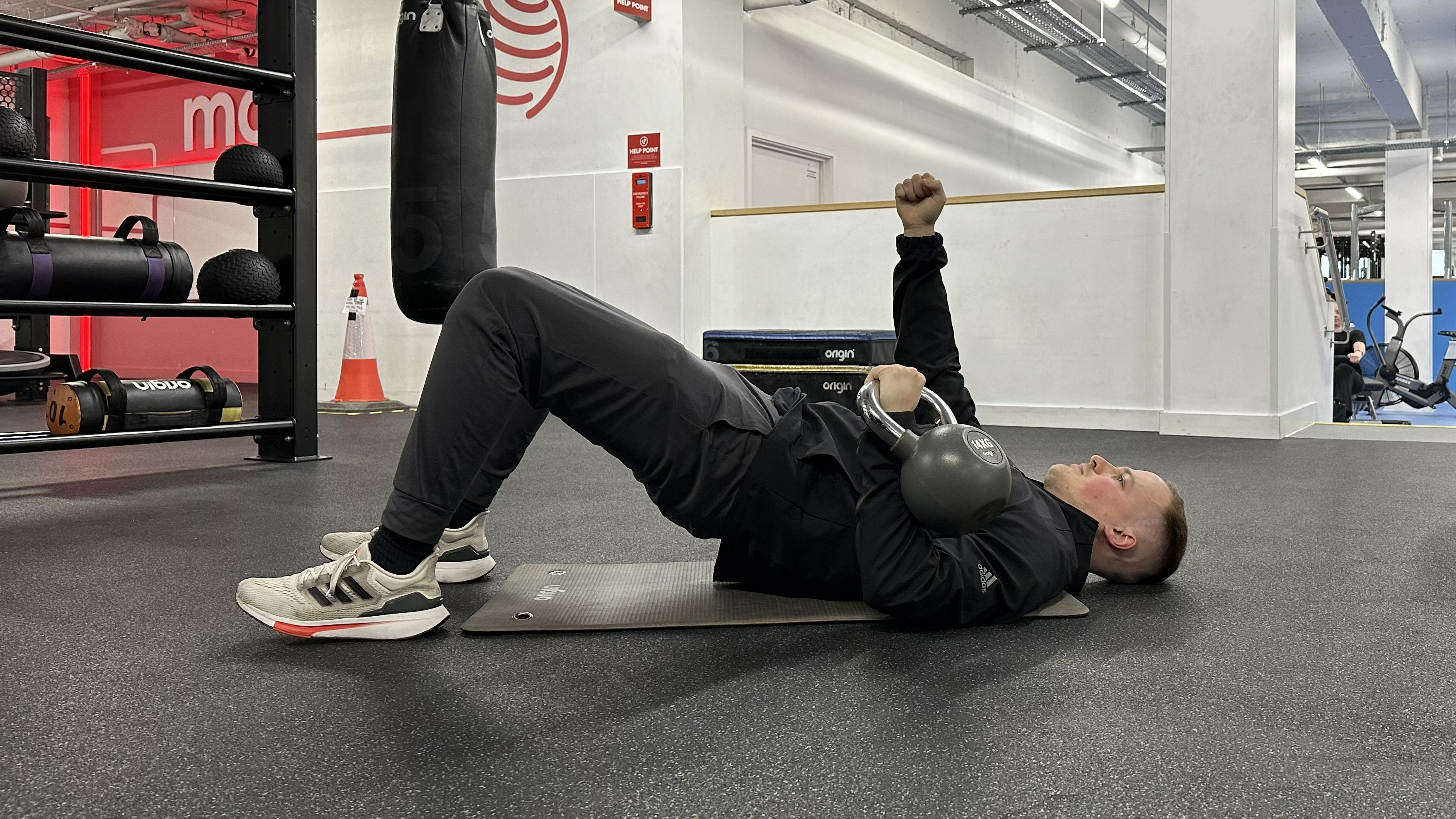

"This pressing variation is excellent for working your chest, triceps, and core, and even challenges your shoulder stability, which is great for upper back health," explains Thompson.
Your core — a section of mid-body muscle around your stomach that includes your abdominals — plays a vital role in keeping you in the glute bridge as you lift the weight, and helps avoid your back arching.
- Lie on the floor in a glute bridge position with your heels firmly planted under your knees and your hips extended up off the floor.
- While maintaining this position, press a single kettlebell up towards the ceiling with one arm, palm facing your midline, and the kettlebell resting on the back of your wrist.
- Keep this position as you lower the kettlebell back down, then tap your elbow and tricep onto the floor before pressing back up again.
- If you're using a weight capable of performing 10-12 repetitions on each side, that's perfect. If your weight is heavier, attempt a set of 12 broken up into 3 or 4 reps with a short rest between each.
2. Single-arm kettlebell gorilla row

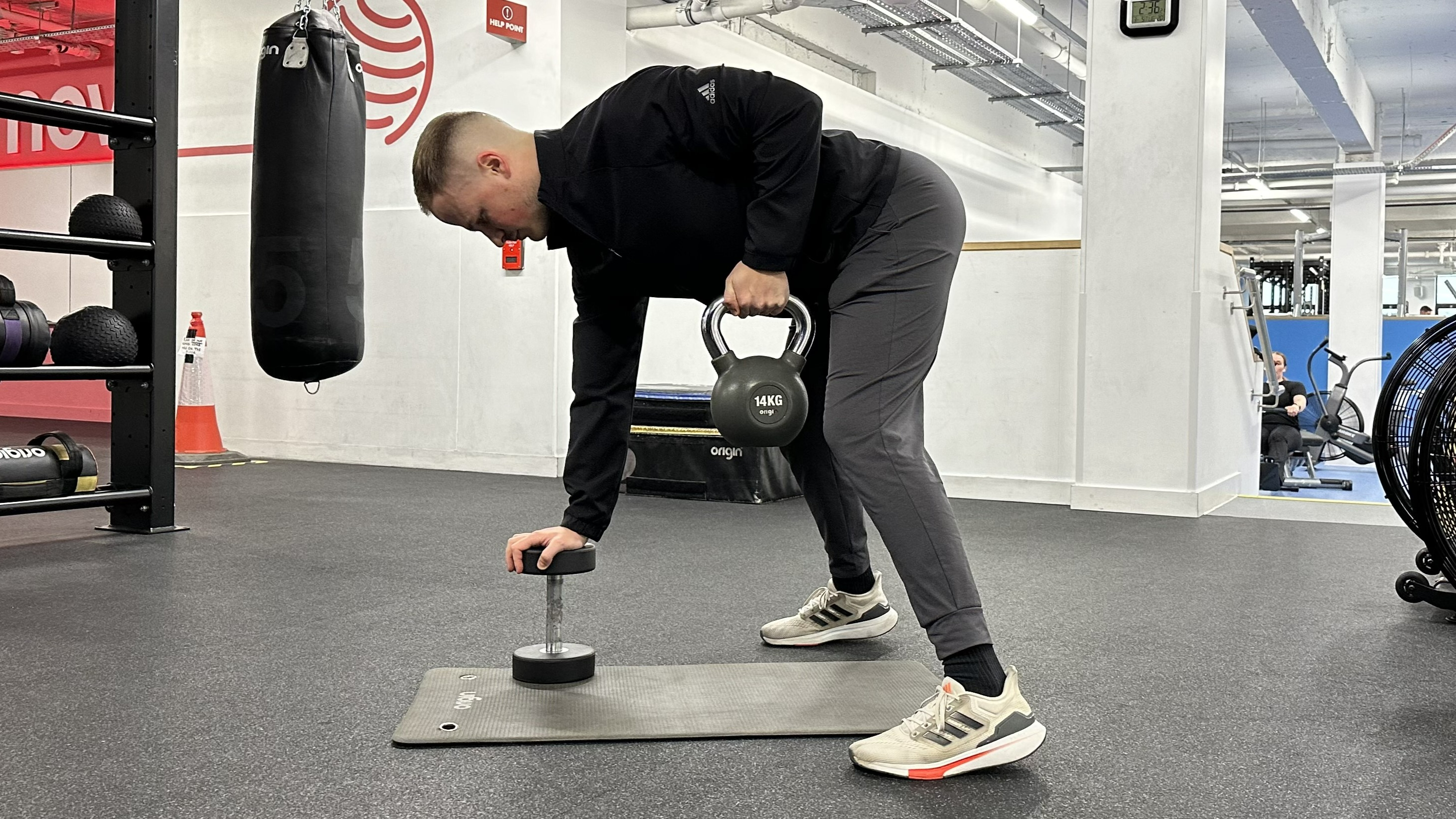
Like the previous floor press, the single-arm kettlebell gorilla row is a compound exercise that works your upper back, biceps, and core all at the same time, boosting the workout's muscle-building effects.
Thompson notes that "the key to executing this movement well is maintaining the fixed tripod position and resisting excessive rotation of the torso as you pull the kettlebell up to your side."
- Start standing with your feet twice as wide as shoulder-width apart. Lean some of your body weight through a single arm onto a solid object such as a bench, dumbbell, or the sofa if you're at home. This will serve as your tripod of support.
- Using your other arm, row the kettlebell up to your side. For best results, try to pull the kettlebell up and slightly back towards your hip crease, as this will ensure activation of the larger back muscles such as the lats.
- Control the kettlebell down to the floor and repeat. Aim to perform 8-10 reps on each side.
3. Tall-kneeling double-hand shoulder press
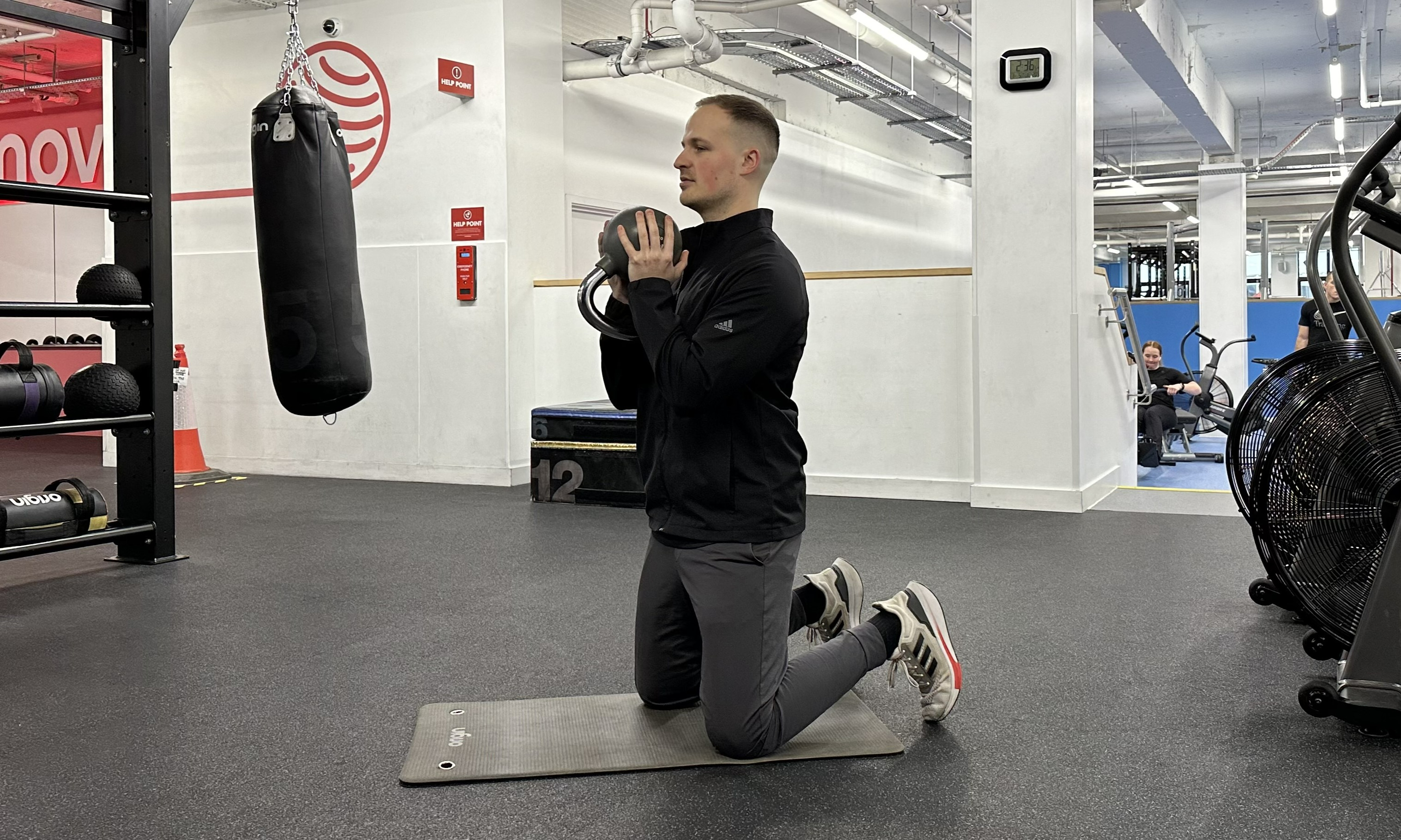

This move works your shoulders and "adds extra tension to your core as you work to maintain position and avoid arching your back. This exercise will induce a burn rather quickly, so your tolerance will be a factor when performing it," explains Thompson.
- Start in a tall kneeling position, holding the ball-shaped section of the kettlebell with both hands in front of your face.
- Press the kettlebell up and away, while consciously maintaining tension in your core and balancing. Aim for 10 reps; if you're able to do 15, go for it. And if you're using a heavy weight, split the set into 3 or 4 segments with short breaks between.
4. Kettlebell drag-throughs
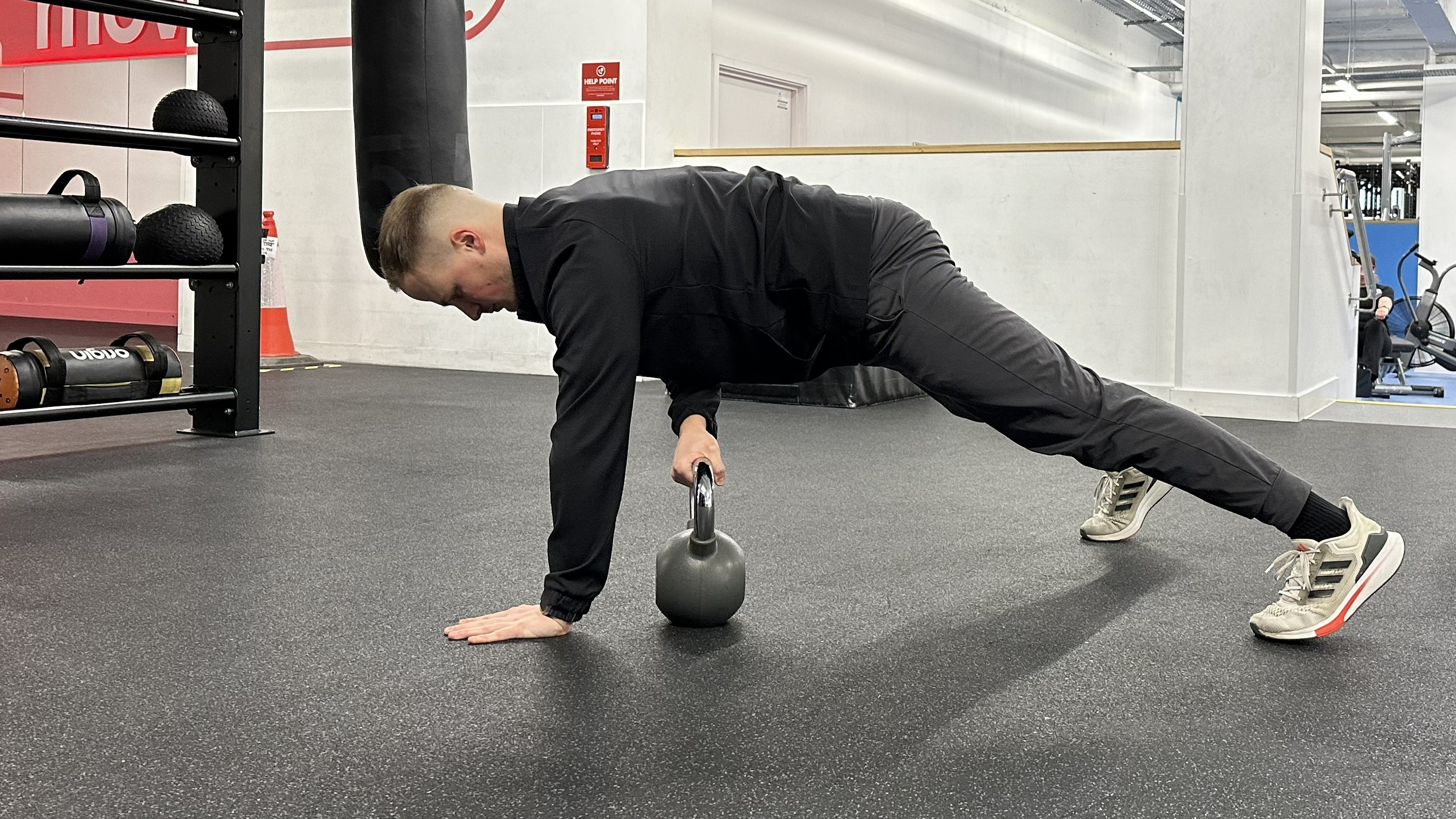
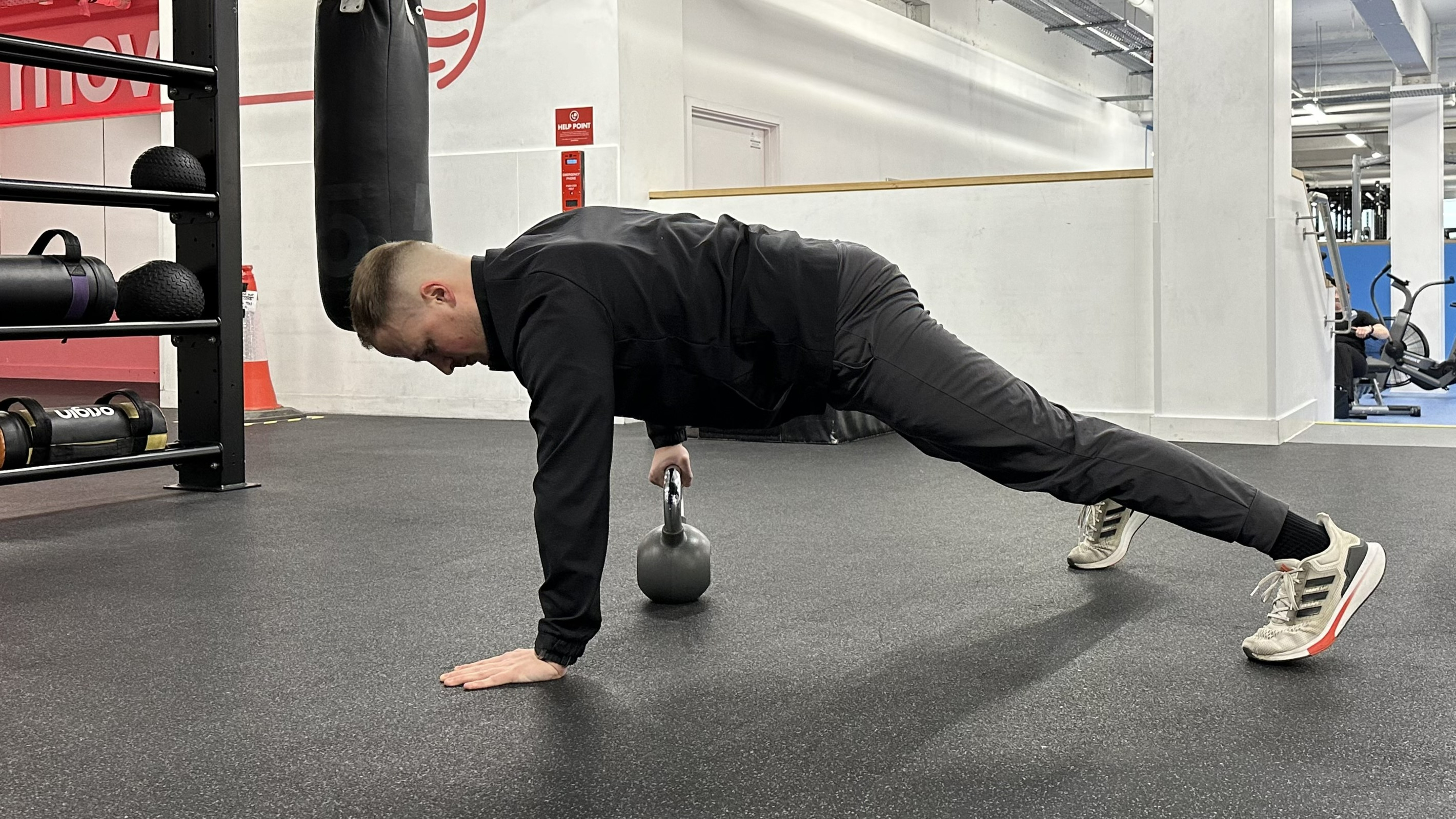
"The most important element of this movement is to keep your core and hips still, which primarily challenges your stability," says Thompson. It's another multi-muscle compound move, so expect to feel it across your whole upper body.
- Start in a high plank position with your feet placed approximately two times shoulder-width apart. Place a kettlebell underneath your chest, toward one side.
- While maintaining a plank position and preventing any rotation in your torso and hips, use the opposite hand to drag the kettlebell across to the other side of your torso.
- Switch hands, shift your weight into your other arm, and drag the kettlebell back. This completes one repetition.
- Perform 6-10 repetitions.
5. Kettlebell reverse crunch
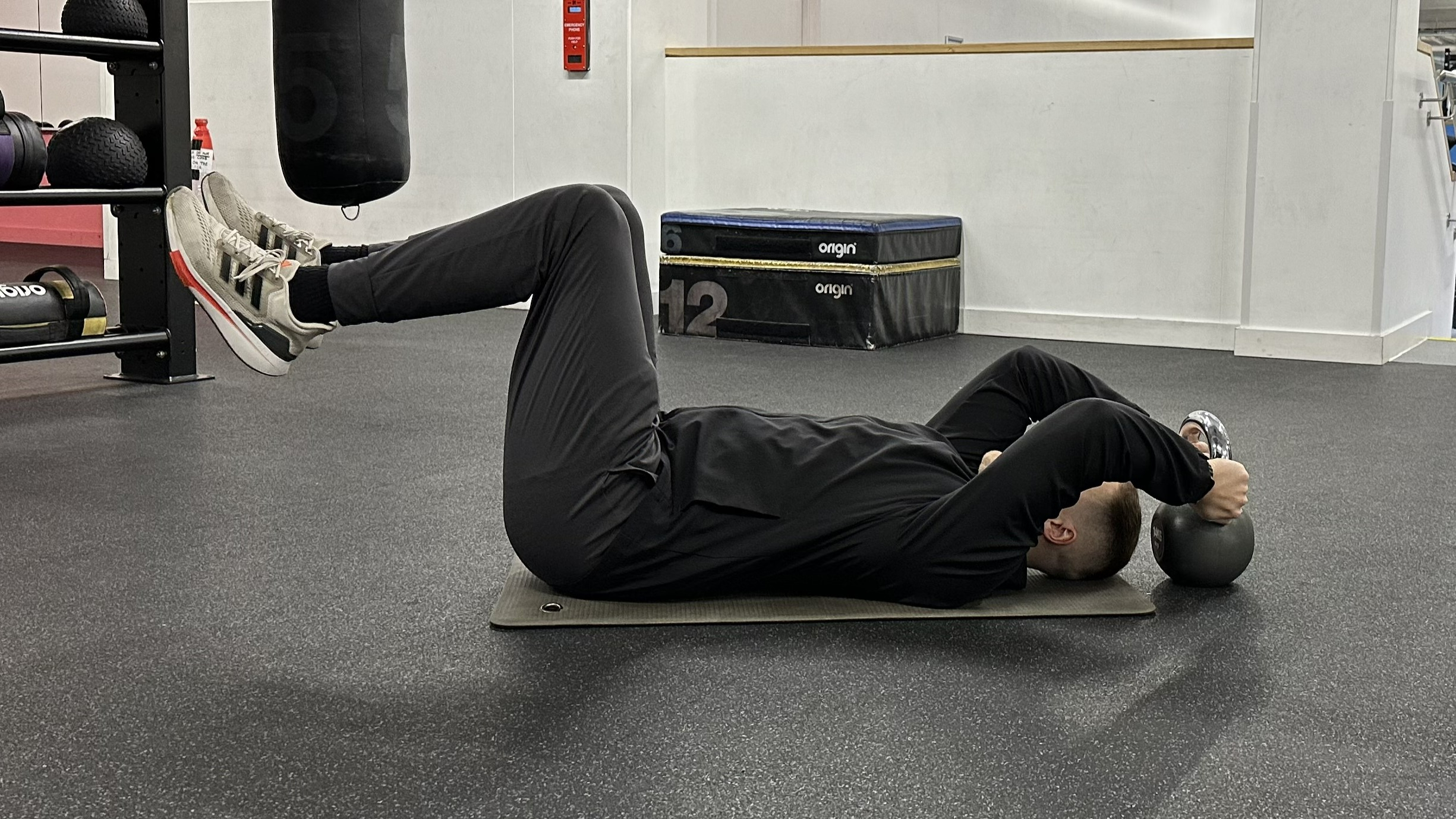
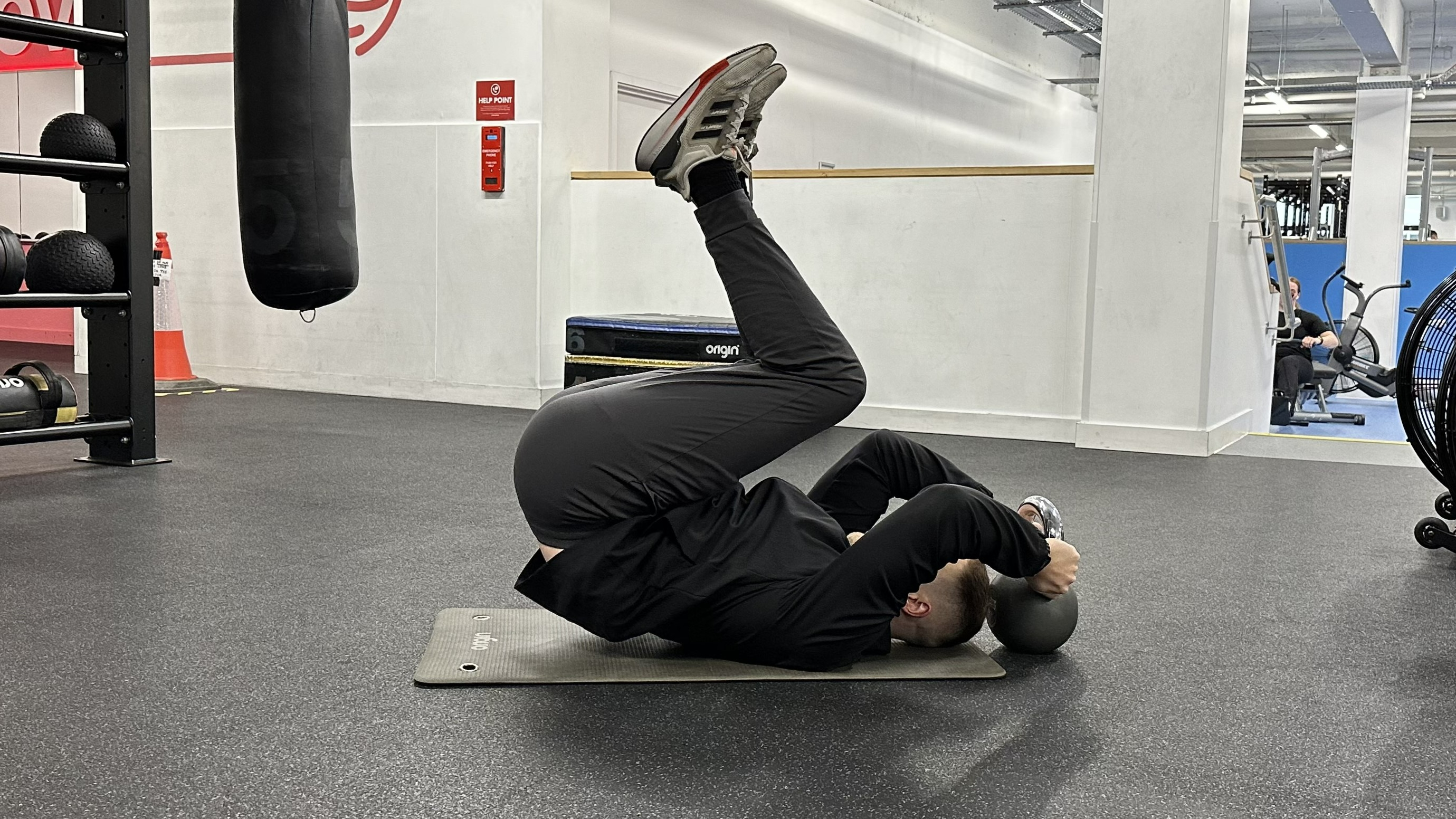
Crunches are one of the best abs exercises you can do, and adding a kettlebell into the mix adds an extra challenge to your core, but also works your shoulders, chest, and arms.
- Lie on your back with a heavy kettlebell planted a few inches from the top of your head. Reach back and grab it; this will be your anchor throughout the movement. Ideally, it's heavy enough to remain stable.
- Next, tuck your knees up above your hips and engage your core muscles to bring your knees up close to your shoulders.
- The key here is to control the lowering phase, aiming for a count of 3-5 seconds as you lower your legs back away from your chest, rolling your spine one vertebra at a time back onto the floor — the slower, the better.
- Aim to perform at least 8 good repetitions and scale up to 15 if you're able to do them with proper form.
More from Tom's Guide
- Forget the gym — build a stronger chest and arms with this 5-move dumbbell workout
- 3 things I wish I had known as a kettlebell beginner
- This kettlebell abs workout torches your whole core and arms with 5 moves

James is Tom's Guide's Buying Guide Editor, overseeing the site's buying advice. He was previously Fitness Editor, covering strength training workouts, cardio exercise, and accessible ways to improve your health and wellbeing.
His first job at as a sales assistant in a department store, and this is where James learned how important it is to help people make purchasing decisions that are right for their needs, whether that's a fountain pen to give as a gift or a new fridge for their kitchen.
James is an advocate for sustainability and reparability, and focuses his reviews and advice through that lens to offer objective insights as to whether a specific product or service will be right for your needs.
